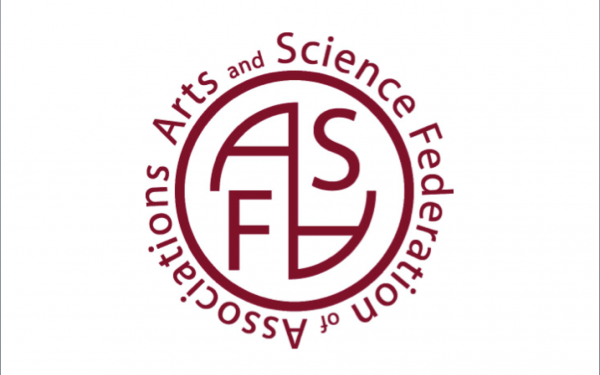ASFA Presents Same Issues, Different Day
By-Elections Fail to Reach Quorum, Again
During the Arts and Sciences Federations of Associations by-elections in November 2016, 206 students voted, missing the requirement of 505 students for quorum.
ASFA represents 20,000 undergraduates.
“It’s just a problem with every student association,” said current Vice-President of Finance Christina Massaro. “It’s always hard to get people to come out and vote.”
This year ASFA had proposed a budget of $4,744.04 to operate the by-elections. The exact amount spent on the by-elections was $3,987.88, which is $756.16 less than what was budgeted.
Current ASFA President Andrea Krasznai blamed the low voter turnout on a lack of advertising. She added that Andrea Gauthier, who ran for VP of Communications and Promotions, didn’t initially know that an executive position was open.
“I don’t think that there’s much of a presence of ASFA on campus,” said President of the Italian Student Association—one of ASFA’s member associations—Melissa Di Lena.
According to ASFA’s by-laws, 2.5 per cent of regular members need to vote in order meet quorum. Whereas the Concordia Student Union, which represents the undergraduate student body, needs 450 students to meet quorum.
This isn’t the first time ASFA has had trouble reaching quorum. In the general elections of April 2015, 300 of the required 427 students voted in the election. The results were therefore not counted.
Then Chief Electoral Officer Andrea V. Fernandes said late planning and spoiled ballots were the issue.
Since the elections results didn’t count, the positions VP Communications and Promotions and independent councilor remain unfilled. ASFA will be doing a call out for both positions and will appoint an interim VP of Communications and Promotions at a council meeting in January.
Another Failed Attempt
ASFA tried to increase its fee-levy by $0.12 again during these by-elections. It has been collecting $1.22 per credit since 2008. Previously, Massaro said the additional funds were to give more money to its member associations and pay ASFA employees such as its CEOs and polling clerks.
Should the fee-levy have increased, Massaro was expecting $20,000 to be added to the budget, effective as soon as 2017.
Di Lena said it was unclear who was on the “yes” committee for the fee-levy question amongst executives and councilors. It was later revealed that the committee consisted of Massaro and Agunik Mamikonyan. A “no” committee had not been formed.
Di Lena added that the only real push for the referendum question came from the ASFA executives.
When asked about why there wasn’t a strong campaign, Massaro admitted, “Lack of time, on my part.” She added that if quorum had been reached, the fee-levy question would have passed.
This is the fifth time in two years that ASFA has asked to raise the fee-levy.
On Nov. 28, 2014, ASFA students voted down a $0.38 fee-levy increase. In the following general elections of April 2015, another bid to increase the fee-levy by $0.38 was made, but the elections didn’t make quorum.
Last March, ASFA proposed a $0.14 increase, which passed. The Link previously reported, however, that there was a mistake on the question of restructuring ASFA. After a miscommunication with the students on what was being voted on, all three questions, including the question on raising the fee-levy, returned to ballot for the sake of transparency, according to Massaro.
The second time it was asked, students voted down the fee-levy increase.
Massaro said ASFA would try for another fee-levy increase in the spring 2017 general elections.
“It’s just a problem with every student association. It’s always hard to get people to come out and vote.” – Christina Massaro, ASFA vice-president of finance
Is Another Vote to Restructure on the Horizon?
Last year, students voted against the referendum question to restructure ASFA twice. If the bylaw had passed, it would have cut the number of executives down from seven to three. The cuts would have included the social coordinator who plans events such as Frosh. It would have also made ASFA a “funding body” for member associations.
Former ASFA External Coordinator and a current CSU executive Lana Elinor Galbraith, said ASFA should look internally on how to make it a better student association.
“All of the executives should be thinking about what their role is and how they can better the association,” she said.
She added that the plan for restructuring was rushed, and that there were questions as to what exactly would happen if ASFA actually restructured.
This year’s executive team is looking to get away from the issues that have given ASFA a bad reputation among students. Krasznai said that individuals caused the issues in past years, and the individuals in ASFA today are making it better. These issues include reports of harassment, such as the Mei-Ling story.
“I think restructuring might be necessary but [last year’s proposal] wasn’t the way to go about it, and it’s not what people wanted, because ‘no’ won,” Massaro said. “I think we throw some really cool events. I understand but I don’t necessarily agree. I’m not sure where I stand on [restructuring].”

_900_600_90.jpg)
_600_832_s.png)

_600_375_90_s_c1.jpg)

_600_375_90_s_c1.jpg)